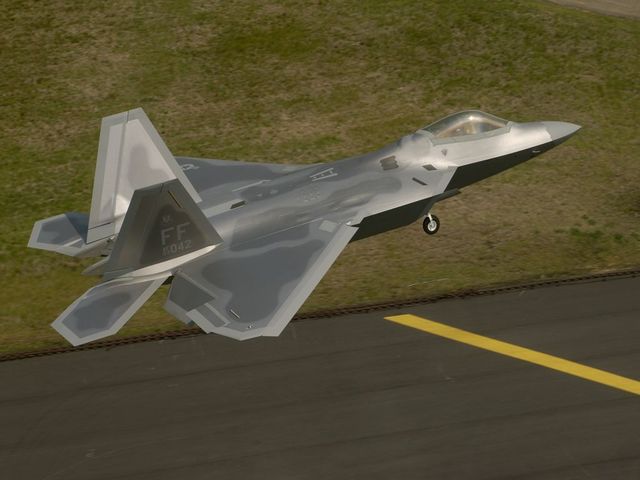 Friday - March 13, 2009
Friday - March 13, 2009
double porn


The Boberg XR-9 pistol is a short recoil operated, locked breech pistol. It uses rotary barrel locking with a single massive locking lug on the top of the barrel, which engages the slide when in battery. The trigger is of double action only (DAO) type, hammer-fired. The heart of the two-stage “pull - push” feed system is the claw-shaped loader, which is pivotally attached to the slide. When slide is in forward position, the claws are lowered under the barrel breech area, gripping the base of the topmost cartridge in the magazine. When slide is cycled (manually or under the recoil of the previous discharge), the claws pull the cartridge rearwards from the magazine until it is clear; at the end of recoil stroke, claws are lifted to place the cartridge to feed position. On the closing stroke of the slide, cartridge is pushed into the barrel chamber, and the feed claws are lowered to grip on the following round in the magazine. Obviously, such system requires specially designed magazines and is somewhat more complicated than standard “push forward” feed system encountered in most other firearms, including pistols. The benefit of this system is significantly increased barrel lenght, which is especially important for compact pistols with shortest possible barrels.
To quote the designer: “The chamber does not have to be sloppy since the cartridge doesn’t have to come from the bottom and “wiggle” into the chamber like on a traditional feed mechanism. Tighter chamber clearance yields about 4% more kinetic energy with 115 grain bullets, and 12% more energy with 147 grain bullets compared to other same-barrel-length guns with the standard sloppy chambers. More power channeled forward instead of backward...”
The mechanism is actual quite similar to the one on a Browning machine gun. Cartridges are held by very light spring pressure in a magazine. Instead of coming out forward like cartridges do in a regular magazine, these come out to the rear.
When the pistol is fired, the bullet travels down the barrel, and spins in one direction because of the rifling in the barrel. You can’t phool physics: this creates a torque in the opposite direction. That torque spins the barrel along its axis a little, perhaps slowed down by a helical spring, and that turning unlocks the barrel from the slide. The bullet is now out of the barrel, but inertia is still pushing the cartridge case back against the bolt face area of the slide. So unlocking the barrel lets the slide ... slide. It goes back over an ejector, spits out the empty case, and is brought to a stop by the compressed mainspring. As the slide begins it’s rearward travel, a little clothespin-like spring thingy pulls a new round from the magazine. At the end of the slide’s rearward stroke, this claw pivots up and raises the fresh cartridge into position. As the slide moves forward, the cartridge is fed straight into the chamber. No feed ramps needed. No slop in the end of the chamber like on most semi-automatics, to give the round a bit of spare room to “go around the corner”. Which means less pressure wasted on expanding the brass, and more of it spent pushing the bullet. Finally, at the end of the forward stroke the slide pushes a little cam upwards which rotates the barrel back, and the loaded round is now locked into battery, ready for the next pull of the trigger.
There is a most excellent 2 second animation, along with several videos of the gun firing, and lots of pictures and information at the Boberg website, Boberg Engineering.
Early reviews are quite positive. The pistol is accurate and reliable and oozes quality.
Ok, why all the fuss? What makes this thing so special, considering the mechanism concept is over 100 years old, and the rotating barrel idea is borrowed from Beretta and other modern designs?
First reason: Almost all semi-automatic pistols put the barrel above and in front of the magazine. The XR9 puts the magazine under the barrel. That means you get either a longer barrel for a given length pistol, or a shorter pistol for a given length barrel. Either one will give you at least an inch more barrel than you can get in a regular pistol. And a longer barrel means higher velocity. More velocity means more power and less flash. Very short barreled guns, like the tiny ones you’d want for a pocket sized CCW “mouse” gun, lose huge amounts of velocity because their barrels are really short.
Second reason: a pistol that uses a locked breech design is much stronger than one that is designed to use a blow-back, unlocked breech. This lets you use more potent cartridges, without getting a face full of still burning gunpowder gas.
Third reason: I think it’s bloody cool looking!!
Boberg is planning on releasing two versions of their new pistol. The “regular” XR9, which offers full sized pistol performance in a small sized package, and the “micro” or “shorty” XR9S that offers mid sized performance in a very small package. How small? This small:
| Ruger LCP | 5.16” | 3.6” | 0.82” | 12 oz | 2.75” | .380 Auto | 6+1 |
| XR9 Shorty | 5.0” | 4.2” | 0.95” | 14 oz | 3.31” | 9mm Luger | 7+1 |
| XR9 Standard | 5.8” | 4.2” | 0.95” | 19.5 oz | 4.20” | 9mm Luger | 7+1 |
The Ruger LCP has very tiny low sights. The XR9 has typical “low” sights; my guess is another .1” - .2” could be shaved off the height by using lower sights. So the Shorty winds up being shorter than the loose-it-in-your-pocket small LCP, but about half an inch taller, and a few ounces heavier. The Standard is just over half an inch longer. But either model gives you one extra shot, has a longer barrel, and uses the 9mm cartridge, which is nearly twice as potent as the .380. Especially when you have enough barrel to stop losing velocity. Oh, and the grip is steeply angled, very much like the P-08 Luger, which gives it nearly perfect ergonomics and a very natural hand position. That steep grip puts a good chunk of the upper back over your hand, so the balance should be very neutral.
Downsides? It isn’t on the market yet, and it is going to cost what most quality pistols cost - $800 - $1000. The company is in start-up, so expect the first couple of years to be, if not a bit rocky, then at least a little gravel strewn, just like any other start up.
More upsides? Mr. Boberg wasn’t overly specific in his patent, so his action could be made for a rifle as well. How about this idea applied to a bullpup action? Talk about minimum length guns! Or he could turn out a full size pistol, perhaps with a double stack magazine, that has a 7” barrel instead of the typical 5” one. Which would add another 100fps or so to the velocity of any of the more potent pistol cartridges, like the 10mm Magnum.
This is the first actually new pistol design I’ve seen in ages. Looking at it, realizing how simple it actually is, gives me such a Duh Moment that I wonder why JMB didn’t figure this one out 100 years ago.
Posted by Drew458
Filed Under: • Guns and Gun Control • Science-Technology •
• Comments (9)
 Thursday - February 12, 2009
Thursday - February 12, 2009
Oops?
Innocent accident, overt action, test of a new weapons system? Seems innocent, but don’t ignore the strategic value here.
Two satellites, one Russian and one American, have collided some 800 kilometers (500 miles) above Siberia, the Russian federal space agency, Roscosmos, said Thursday.
The collision produced two large debris clouds, which are not believed to pose a threat to the International Space Station as long as the clouds continue moving in a lower orbit, Roscosmos said.
There is a chance the debris could hit other satellites at the same altitude, however, the space agency said.
“We have not received a warning of the possible danger to the ISS. The fragments may descend to the ISS orbit in several years, although I do not rule out that some fragments may go down within several days,” Mikhail Martirosov, from the Russian mission control center, told the Russian news agency Interfax Thursday.
An earlier version of this story said they were both communication satellites. Now, the funny thing is, a satellite’s orbit is mapped out in advance. Ages before it’s even launched. And there is an international protocol in place that keeps them from “tailgating” each other. So accidents don’t just happen. Somebody screwed up, or somebody is playing reindeer games in space. Question is, who?
CAPE CANAVERAL, Fla. – Two big communications satellites collided in the first-ever crash of two intact spacecraft in orbit, shooting out a pair of massive debris clouds and posing a slight risk to the international space station. NASA said it will take weeks to determine the full magnitude of the crash, which occurred nearly 500 miles over Siberia on Tuesday.
“We knew this was going to happen eventually,” said Mark Matney, an orbital debris scientist at Johnson Space Center in Houston.
NASA believes any risk to the space station and its three astronauts is low. It orbits about 270 miles below the collision course. There also should be no danger to the space shuttle set to launch with seven astronauts on Feb. 22, officials said, but that will be re-evaluated in the coming days.
The collision involved an Iridium commercial satellite, which was launched in 1997, and a Russian satellite launched in 1993 and believed to be nonfunctioning. The Russian satellite was out of control, Matney said. The Iridium craft weighed 1,235 pounds, and the Russian craft nearly a ton.
Hmmm. Guess the Iridium folks weren’t watching their radars carefully enough. Maybe.
Iridium satellites are unusual because their orbit is so low and they move so fast. Most communications satellites are in much higher orbits and don’t move relative to each other, which means collisions are rare.
Smart people, don’t think too hard on that last one. I’m pretty sure the more distant satellites need to move even faster than the closer ones.
Posted by Drew458
Filed Under: • Science-Technology • Space •
• Comments (3)
 Wednesday - January 28, 2009
Wednesday - January 28, 2009
Privacy? You Doan Nee No Steenkin Privacy
Part 1, sort of
And think of that as the good news. The bad? So is everyone else. Follow Mr. Christian on Twitter. Tune in to Wi-Fi anywhere. Broadcast yourself. Make intimate connections with total strangers! And the whole world, thugs included, will know who you are, where you live. what you look like, and whether you’ve got any nice stuff ... and they’ll also know when you’re out of town. Oh, you have privacy concerns? Not to worry. Just lie. Create a false you. Photograph someone else’s attack dog, someone else’s apartment. But don’t not be part of the total social net. That would be, like, like being a free thinker who doesn’t fit in. No. Go along, get along, sign up, tune in, fit in.
Resistance is futile. Take the pledge; remember: ”Together we can. Together we ARE. And together we will be the Change that we seek.” Fucking zombies. Get wired. Like a puppet on a string. Then dance for your new master, whom you have just pledged to serve. It’s cool to be a slave.
UPDATE: Folks, watch the video at the above zombies link please.
Part 2, kinda
Welcome to the future. And it sucks. No thanks.
Mathew Honan explores the perks and the perils of being part of the open source generation.
The location-aware future—good, bad, and sleazy—is here. Thanks to the iPhone 3G and, to a lesser extent, Google’s Android phone, millions of people are now walking around with a gizmo in their pocket that not only knows where they are but also plugs into the Internet to share that info, merge it with online databases, and find out what—and who—is in the immediate vicinity. That old saw about how someday you’ll walk past a Starbucks and your phone will receive a digital coupon for half off on a Frappuccino? Yeah, that can happen now.
Simply put, location changes everything. This one input—our coordinates—has the potential to change all the outputs. Where we shop, who we talk to, what we read, what we search for, where we go—they all change once we merge location and the Web.
I wanted to know more about this new frontier, so I became a geo-guinea pig. My plan: Load every cool and interesting location-aware program I could find onto my iPhone and use them as often as possible. For a few weeks, whenever I arrived at a new place, I would announce it through multiple social geoapps. When going for a run, bike ride, or drive, I would record my trajectory and publish it online. I would let digital applications help me decide where to work, play, and eat. And I would seek out new people based on nothing but their proximity to me at any given moment. I would be totally open, exposing my location to the world just to see where it took me. I even added an Eye-Fi Wi-Fi card to my PowerShot digital camera so that all my photos could be geotagged and uploaded to the Web. I would become the most location-aware person on the Internets!
To test whether I was being paranoid, I ran a little experiment. On a sunny Saturday, I spotted a woman in Golden Gate Park taking a photo with a 3G iPhone. Because iPhones embed geodata into photos that users upload to Flickr or Picasa, iPhone shots can be automatically placed on a map. At home I searched the Flickr map, and score—a shot from today. I clicked through to the user’s photostream and determined it was the woman I had seen earlier. After adjusting the settings so that only her shots appeared on the map, I saw a cluster of images in one location. Clicking on them revealed photos of an apartment interior—a bedroom, a kitchen, a filthy living room. Now I know where she lives.
A couple years ago this was scary. Now it’s so far beyond being old hat that few people even realize it’s wrong. It’s a convenience feature, dammit, and they demand this level of connection and service!! (Ok, this doesn’t actually exist yet. But it’s nothing compared to the technological power shown above. All it would take is a flip of a switch, one that already exists, to make public that information that you can only pray is still “private”. And Bush was Hitler because of the wiretap thing. Riiiight.)
Posted by Drew458
Filed Under: • Obama, The One • Scary Stuff • Science-Technology •
• Comments (7)
 Thursday - December 11, 2008
Thursday - December 11, 2008
COMPUTER GEEK BUILDS HIS OWN GIRLFRIEND … STILLS AND VIDEO. BIZARRE BUT INTERESTING.
Hey, was it the Mills Bros. or the Ink Spots who once sang,
I’m gonna buy a paper doll that I can call my own.
I didn’t post the whole article here so use the link provided for more photos and text.
It is interesting but ..... ?? Don’t know. Kinda creepy having this around wouldn’t ya think?
Hey, remember an episode of The Twilight Zone with this very subject? Stared the late Jack Warden. Hmm. Funny I recall that.
Computer geek too busy for romance builds himself the perfect girlfriend
By Daily Mail Reporter
Last updated at 9:06 AM on 11th December 2008If blind dates, speed dating or websites haven’t led you to the love of your life, you could always take a leaf out of inventor Le Trung’s book - and build your perfect partner.
The 33-year-old has created Aiko - a ‘twenty-something’ robot who not only looks feminine and sexy but also does household chores and his accounts.
But despite her shiny hair and 32-23-33 figure, Aiko - whose name means love child - is no trophy partner.
She is accomplished too with a talent for maths and a 13,000-sentence vocabulary - in English and Japanese. She can also recognise faces, read aloud from a newspaper and give directions.
Aiko, a fembot made from silicone and A.I. technology, is a genuine labour of love for Mr Trung.
He has taken out credit cards and loans, sold his car and spent his life savings on perfecting the machine - at a cost so far of £14,000.
The former software programmer, from Ontario, Canada, said he never had time to find a real wife but has not built Aiko as a sexual partner - although she is touch-sensitive and reacts if she is shown affection or is hurt.
Posted by peiper
Filed Under: • Amazing Science and Discoveries • Odd-Strange • Science-Technology •
• Comments (2)
 Wednesday - December 10, 2008
Wednesday - December 10, 2008
Bionic Arm
Dean Kamen, who I spoke about here, has come up with a way to help our soldiers who have lost limbs.
Segway Inventor Builds Bionic Arm for Wounded GIs
The man behind the Segway scooter has a new invention: bionic arms for wounded soldiers.
Called the “Luke Arm” after the prosthetic hand sported by Luke Skywalker in the “Star Wars” movies, Dean Kamen’s device is lightweight, self-contained and fully capable of picking up grapes, baby bottles, even electric drills.
Kamen says the Department of Defense approached him and his company, DEKA, in 2005 about the project, not the other way around.
“This guy visits and basically says, ‘Look, we’ve had 1,600 kids go over [to Iraq] and lose an arm. Two dozen have lost two,’” Kamen tells Newsweek in a story for next week’s issue. “‘At the end of the Civil War, we gave them a hook on a stick. Now we give them a hook at the end of a plastic tube.’”
The Luke Arm has four fingers and an opposable thumb, and was designed to be controlled by muscular movement in the wearer’s remaining limbs.
But thanks to neurological advances in “targeted renervation” by Dr. Todd Kuiken of the Rehabilitation Institute of Chicago, the Luke Arm can now connect directly to motor nerves, meaning it can be controlled purely by thought alone.
And the nerve connections are two-way: The wearer gets “force feedback” about his own grip and movements, allowing him to pick up an empty water bottle without crushing it.
Posted by Drew458
Filed Under: • Amazing Science and Discoveries • Medical • Science-Technology •
• Comments (4)
 Monday - December 08, 2008
Monday - December 08, 2008
Lego Land
My boys love legos. I think we have over 10,000 bricks and parts in our home at last count. My oldest, the 11 year-old, also is an engineer. He can dream of and build just about anything. A couple of years ago, we heard about the F.I.R.S.T. Lego League. FIRST (For Inspiration and Recognition of Science and Technology) is an organization started by Dean Kamen (yeah, the Segway guy) to get kids excited about science which started this competition for 9-14 year olds. It is an intense, two month season of research, robot building and teamwork that culminates in regional and state-level competitions.
In the middle of September, the challenge for the year is announced. There are four aspects to the competition that each contribute 25% to your overall score:
- Research project - This is the team’s research presentation on the topic of the year. This year’s topic was: “How does the climate affect your community?”
- Teamwork - How well does your team work together?
- Robot Design - How well is your robot designed for the challenges
- Robot performace - This is the part the kids really look forward to. Its a timed event of 2:30 where the robot the kids designed (using the Lego NXT system) try and accomplish as many of the year’s challenges as possible. Each year, there are a potential of 400 points to be gatherd.
When the challenge was announced this year, we had no robot base, we had no practice table and most importantly, we had no team. So we called a few people we knew who might be interested and found 4 other kids to join us...two more boys and two girls..a rookie team of 6 kids who have never worked together before. We ordered the base robot kit and the year’s challenge kit (to build the challenges with) and had one of the dads build us a practice table. We started meeting in the beginning of October The regional tournament was in mid-November, so we only had about 6 weeks to prepare. Our expectations were pretty low. This was going to be a “fun” year of just getting our feet wet and seeing how it all worked.
The kids worked real hard, redesigning the robot four or five times until they were satisfied with the stability and performance capabilities. here is what they ended up with:

For the research project, they chose to study the affect of salt on the roads and come up with an alternative solution. (they chose to present the use of “Jet Dryers” that NASCAR and the Airports use to dry the road surfaces).
We went to the regional tournament knowing we were a first-year rookie team and jsut wanted to have fun. Our robot could consistantly score in the low 100’s (out of the possible 400), so our expectations were not very high.
In the robot performance, we scored a 140 (best score of three runs), which was the second best for the day (our frieds won the top slot for performance with a 145). The kids were elated that they had done so well. Apparently, scores all around the nation have been low this year due to the complexity of the board. When we were at the awards ceremony at the end of the day, we were shocked to find out we had won the overall tournament (the combination of all four scores from teh different categories) and would be moving on the the state tournament in just three weeks!
There were some changes they wanted to make in the design based upon some neat ideas they saw other teams use, so we went to work. As we changed on aspect (the front forsk, for example), it gave them an idea to change something else (the sweeping arms). Eventually, we changed every attachment and every program. The kids were having fun, but getting a little nervous that we had actually redon the entire solution in just a couple of weeks. We practiced and practiced and had the ability to get nearly 300 points, but not withing the two and a half minute time limit for the run. They had to decide which pieces to jettison so we would be within the time limit.
This past weekend was the state tournament. 39 teams in thier devision (younger kids) from around the Virginia and Metro DC area gathered at James Madison University for the two-day event. On Saturday, they competed in their teamwork and research project intervies and judging. Yesterday was the robot design judging and the performance runs. They had ten tournamen tables set up and were running groups through every ten minutes all day (80 teams all together for the two divisions, four runs each: 1 practice run and three judging runs). They did very well in all three of the interview judging sessions, so the robot performance was going to be key
The practice run was a disaster (we scored 60). We made a few programming changes at a practice table and the first judging run was better (125). The second run got us up to 160. Then the third run didn’t go so well with us scoring only 120.
We did not end up winning any awards (the top robot score for our division was 275...well done!), but the kids had a fantastic experience, learning a lot about science, robots and the climate. Overall, they finished in 6th place. Out of 39 teams, we felt that was a strong showing for our little band of rookies.
When we got home last night, my boys immediatly started talking about about how they could improve for next year, building a few test attachments and seeing how they would work.
Now that the frantic season is over, I can get back to being more engaged in politics and other things. Its amazing how such an activity can completely dominate your life for a time. Thanks for letting me indulge you with a little glimpse into the MrChristian household.
Posted by Drew458
Filed Under: • Personal • Science-Technology •
• Comments (2)
 Thursday - December 04, 2008
Thursday - December 04, 2008
Archaeologists have discovered a lost city carved into the Andes Mountains.
Lost city of ‘cloud people’ found in Peru
Archaeologists have discovered a lost city carved into the Andes Mountains by the mysterious Chachapoya tribe.
By Jeremy McDermott, Latin America Correspondent
The Telegraph

The settlement covers some 12 acres and is perched on a mountainside in the remote Jamalca district of Utcubamba province in the northern jungles of Peru’s Amazon.
The buildings found on the Pachallama peak are in remarkably good condition, estimated to be over 1,000 years old and comprised of the traditional round stone houses built by the Chachapoya, the ‘Cloud Forest People’.
The area is completely overgrown with the jungle now covering much of the settlement but explorers found the walls of the buildings and rock paintings on a cliff face.
The remote nature of the site appears to have protected the site from looters as archaeologists found ceramics and undisturbed burial sites.
Archaeologist Benedicto Pérez Goicochea said: “The citadel is perched on the edge of an abyss.
“We suspect that the ancient inhabitants used this as a lookout point from where they could spot potential enemies.”
The ruins were initially discovered by local people hacking through the jungle. They were drawn to the place due to the sound of a waterfall.
The local people “armed with machetes opened a path that arrived at the place where they saw a beautiful panorama, full of flowers and fauna, as well as a waterfall, some 500 metres high,” said the mayor of Jamalca, Ricardo Cabrera Bravo.
Initial studies have found similarities between the new discovery and the Cloud Peoples’ super fortress of Kulep, also in Utcubamba province, which is older and more extensive that the Inca Citadel of Machu Picchu, but has not been fully explored or restored.
Little is known about the Chachapoya, except that they had been beaten into submission by the mighty Incas in 1475.
When in 1535 the Spanish Conquistadores arrived in Peru, they found willing allies in the Cloud People for their fight against the Incas.
Spanish texts from the era describe the Cloud People as ferocious fighters who mummified their dead.
They were eventually wiped out by small pox and other diseases brought by the Europeans.
The women of the Chachapoya were much prized by the Incas as they were tall and fair skinned. The Chronicler Pedro Cieza de León offers wrote of the Chachapoyas.
“They are the whitest and most handsome of all the people that I have seen in Indies, and their wives were so beautiful that because of their gentleness, many of them deserved to be the Incas’ wives and to also be taken to the Sun Temple.”
Wish the Telegraph would post the shots here they have in the hard copy. I think this is awesome. How much else is out there somewhere waiting to be discovered?
Posted by peiper
Filed Under: • Amazing Science and Discoveries • History • Science-Technology •
• Comments (3)
 Monday - December 01, 2008
Monday - December 01, 2008
Twitter - I didn’t Get it
People kept urging me to try Twitter, but I never saw the attraction.
For those who aren’t familiar with it, Twitter is basically a messaging service that allows you to send a quick note to your “followers” (people who are interested in what you are doing). You dash off a note, and anyone who is interested gets it. They can receive a text message on their phone, or on the Twitter website, or on a number of third-party tools.
I’ve started using it a little bit to keep in touch with some family members. I’m finding it much more convenient than text messaging (the little keys don’t work that well with my ham hands). There are also a number of conservative bloggers that have accounts that I now follow. I can get quick updates on stories faster than checking the RSS feeds.
I use a tool called Twhirl, which allows me to “follow” a number of Twitters as well as make “tweets” easily.
If you want to try it out, you can follow me here. Let me know what you think.
Posted by Drew458
Filed Under: • Science-Technology •
• Comments (2)
Pentagon hires British scientist to help build robot soldiers that ‘won’t commit war crimes’
Oh come on. Is this article making any news in the USA? It just seems so odd.
What’s with the Geneva Conventions thing anyway. The ppl we generally end up fighting don’t use those rules and frankly if from time to time our guys turn a blind eye, hey. That’s life. And death. That’s war.
The American military is planning to build robot soldiers that will not be able to commit war crimes like their human comrades in arms.
By Tim Shipman in Washington
Last Updated: 7:36AM GMT 01 Dec 2008The US Army and Navy have both hired experts in the ethics of building machines to prevent the creation of an amoral Terminator-style killing machine that murders indiscriminately.
By 2010 the US will have invested $4 billion in a research programme into “autonomous systems”, the military jargon for robots, on the basis that they would not succumb to fear or the desire for vengeance that afflicts frontline soldiers.
A British robotics expert has been recruited by the US Navy to advise them on building robots that do not violate the Geneva Conventions.
Colin Allen, a scientific philosopher at Indiana University’s has just published a book summarising his views entitled Moral Machines: Teaching Robots Right From Wrong.
He told The Daily Telegraph: “The question they want answered is whether we can build automated weapons that would conform to the laws of war. Can we use ethical theory to help design these machines?”
Pentagon chiefs are concerned by studies of combat stress in Iraq that show high proportions of frontline troops supporting torture and retribution against enemy combatants.
Ronald Arkin, a computer scientist at Georgia Tech university, who is working on software for the US Army has written a report which concludes robots, while not “perfectly ethical in the battlefield” can “perform more ethically than human soldiers.”
He says that robots “do not need to protect themselves” and “they can be designed without emotions that cloud their judgment or result in anger and frustration with ongoing battlefield events”.
Airborne drones are already used in Iraq and Afghanistan to launch air strikes against militant targets and robotic vehicles are used to disable roadside bombs and other improvised explosive devices.
Last month the US Army took delivery of a new robot built by an American subsidiary of the British defence company QinetiQ, which can fire everything from bean bags and pepper spray to high-explosive grenades and a 7.62mm machine gun.
But this generation of robots are all remotely operated by humans. Researchers are now working on “soldier bots” which would be able to identify targets, weapons and distinguish between enemy forces like tanks or armed men and soft targets like ambulances or civilians.
Their software would be embedded with rules of engagement conforming with the Geneva Conventions to tell the robot when to open fire.
Dr Allen applauded the decision to tackle the ethical dilemmas at an early stage. “It’s time we started thinking about the issues of how to take ethical theory and build it into the software that will ensure robots act correctly rather than wait until it’s too late,” he said.
“We already have computers out there that are making decisions that affect people’s lives but they do it in an ethically blind way. Computers decide on credit card approvals without any human involvement and we’re seeing it in some situations regarding medical care for the elderly,” a reference to hospitals in the US that use computer programmes to help decide which patients should not be resuscitated if they fall unconscious.
Dr Allen said the US military wants fully autonomous robots because they currently use highly trained manpower to operate them. “The really expensive robots are under the most human control because they can’t afford to lose them,” he said.
“It takes six people to operate a Predator drone round the clock. I know the Air Force has developed software, which they claim is to train Predator operators. But if the computer can train the human it could also ultimately fly the drone itself.”
Some are concerned that it will be impossible to devise robots that avoid mistakes, conjuring up visions of machines killing indiscriminately when they malfunction, like the robot in the film Robocop.
(Hey there, WESTWORLD?)Noel Sharkey, a computer scientist at Sheffield University, best known for his involvement with the cult television show Robot Wars, is the leading critic of the US plans.
He says: “It sends a cold shiver down my spine. I have worked in artificial intelligence for decades, and the idea of a robot making decisions about human termination is terrifying.”
Posted by peiper
Filed Under: • Science-Technology •
• Comments (2)
 Saturday - September 27, 2008
Saturday - September 27, 2008
Smart Tools
This is pure nerd-vana to a tool junkie. The very best kind of tool porn. This really is a quantum leap forward in power saw technology. It’s the “intelligent” table saw that knows when it’s cutting wood, and when it’s cutting your fingers off. And when the latter happens, the blade stops and retracts in an instant. I’ve known too many carpenters and butchers in my time who could go by the nickname “Stubby” because they all lose a few fingers eventually. Right now this saw costs about 3 times what other saws cost ... but this is how the future ought to be.
SawStop’s 10” cabinet saw and 10” contractor saw were developed from the ground up with a particular focus on safety and quality. They feature a revolutionary safety system that stops and retracts the blade (within 5 milliseconds) upon accidental contact, drastically reducing the severity of user injury. The safety system provides invisible protection (doesn’t interfere with your work), is always “on” and performs continuous self tests. The saws also includes a European style riving knife (secured via a quick-change mount) that helps minimize kick-back.

How does it do it? The saw blade is slightly electrified, and has a monitoring circuit. When your hand touches the blade the voltage drops, and that triggers the safety mechanism. That blows a fuse which lets a spring loaded aluminum block slam against the running saw blade. The blade and the motor are mounted on a pivot, so when the block smacks into them not only is the blade stopped dead in its tracks, the whole affair snaps out of the way. So the blade instantly stops and hides under the table. Impressive!
Found over at Hog On Ice. The SawStop is an industrial grade tool, and is priced accordingly. Prices run between $2800 to $3400
Posted by Drew458
Filed Under: • Neat Inventions • Science-Technology •
• Comments (5)
 Thursday - August 14, 2008
Thursday - August 14, 2008
The Sat-Nav wristwatch from 1920. Who would have thought. There really isn’t anything new.
THIS STORY REMINDS ME OF MY DAYS IN NASHVILLE, WORKING WITH WRITERS AND MUSICIANS AND THE OLD SAYING, “THERE’S NOTHING NEW.”
It contains no temperamental microchips and would never send a
lorrytruck down a bike track.
By Nick Allen
Last Updated: 4:16PM BST 14 Aug 2008

Invented in 1920 the original Sat-Nav wristwatch relied instead on good old fashioned paper maps wound around wooden rollers.
It was intended to allow drivers to navigate around the UK but with so few cars on the roads the invention never really took off.Now consigned to the scrap heap of history the watch is one of many gadgets patented by inventors looking to strike it rich with their bizarre contraptions.
Fifty of the labour saving devices, all conceived between 1851 and 1951, have been collected by author Maurice Collins.
They are on show as part of the British Library’s Weird and Wonderful Inventions Display.Many of them reflect the inventive spirit of the Victorian era and embraced new technology to make every day tasks easier.
They include a mechanical page turner from 1890, a two-handled self-pouring teapot from 1886 and a whisky bottle lock patented in 1882 which was designed to stop servants pilfering the drink.
There were also self-lighting matches and “Go no further” honeymoon garters.Other potentially ingenious, but ultimately futile, inventions included a clockwork burglar alarm from 1852, a grenade that puts out fires from 1890 and an automatic nose hair cutter from 1920.
In 1940, as the Blitz began, one budding inventor was more worried about patenting his new beer can hole maker. Needless to say his creation did not make a him a millionaire.
Posted by Drew458
Filed Under: • Science-Technology • UK •
• Comments (0)
Rat’s ‘brain’ used to power robot . Not a joke. It’s for real.
I THOUGHT AT FIRST HEY! WHAT AN OPPORTUNITY TO BUILD THE FIRST EVER ROBOT POLITICIAN. BUT THEN I REMEMBERED, THERE ARE SOME THINGS EVEN
A RAT WILL NOT AGREE TO.
A robot has been created which is powered by a rat’s “brain”.
By Kate Devlin
Last Updated: 1:14PM BST 14 Aug 2008
Electrical signals from rat cells have been harnessed to drive the robot, which is on wheels, around a laboratory.
By stimulating certain responses within the cells scientists have even been able to make the robot, or “animat”, move.
The “brain” is actually rat brain tissue which has been artificially grown in a lab.The scientists at Reading University hope that they can use the machine to understand more about how our brains work, and even to develop treatments for diseases such as epilepsy, Parkinson’s and Alzheimer’s Disease.
To create the machine scientists first grew rat nerve cells in a laboratory.
These cells connect with each other, sending signals within around 24 hours.After a week the scientists can detect activity similar to brain activity. Within two or three weeks the cells can be hooked up to the robot.
The team uses bluetooth technology, which allows them to send communication without the use of wires.Scientists can also use sonar signals to cause the robot to swerve to avoid a wall, by triggering different signals in the “brain”, reports New Scientist magazine.
The robots currently turn eight out of 10 times, but Professor Kevin Warwick, head of cybernetics at Reading University, who led the study, said that figure could increase substantially.He said: “[The animal] is actively learning.
“The signals and the pathways are strengthening as each action gets repeated.”Prof Warwick said he believed that eventually the robot would turn 100 per cent of the time.
He also hopes to use the animat to try to understand more about how the brain works, for example how it remembers things, by capturing the signals.However, these “brains” have a limited lifespan and currently live for only around three months, as long as they are regularly fed in temperature controlled incubators.
Prof Steve Potter, from the Georgia Institute of Technology, who has been involved in similar technology involving animals and robots, said that it was clear that brain cells have “evolved to reconnect under almost any circumstance that doesn’t kill them.”
http://tinyurl.com/5w3nkj
Posted by Drew458
Filed Under: • Medical • Science-Technology • UK •
• Comments (1)
 Wednesday - June 04, 2008
Wednesday - June 04, 2008
Up in the air, junior birdmen!
As today’s Google header title points out, today it the 225th anniversary of human flight. Sorta kinda. Mostly. Way back in 1783, those two famous Frenchmen, Jacques-Etienne and Joseph-Michel Montgolfier, built and flew a hot air balloon for the very first time in front of witnesses. They had flown one 7 months earlier, by accident. Nobody else saw it take off, and when it landed the superstitious peasants thought it was some kind of demon attacking them so they chopped it up with farm tools. So today, June 4th, is the official anniversary of flight.
The two brothers then set about building a contraption 3 times larger in scale (27 times larger in volume). The lifting force was so great that they lost control of their craft on its very first test flight on 14 December 1782. The device floated nearly 2 kilometres (about 1.2 mi). It was destroyed after landing by the “indiscretion” of passersby.
The brothers decided to make a public demonstration of a balloon in order to establish their claim to its invention. They constructed a globe-shaped balloon of sackcloth with three thin layers of paper inside. The envelope could contain nearly 790 m³ (28,000 cubic feet) of air and weighed 225 kg (500 lb). It was constructed of four pieces (the dome and three lateral bands), and held together by 1,800 buttons. A reinforcing “fish net” of cord covered the outside of the envelope.
On 4 June 1783, they flew this craft as their first public demonstration at Annonay in front of a group of dignitaries from the Etats particulars. Its flight covered 2 km (1.2 mi), lasted 10 minutes, and had an estimated altitude of 1.600 - 2.000m (5,200 - 6,600 ft). Word of their success quickly reached Paris. Etienne went to the capital to make further demonstrations and to solidify the brothers’ claim to the invention of flight.

It would be several more months until a larger balloon could be built that would carry people. But on November 21, the first free flight occurred, carrying aloft Jean-Francois Pilatre de Rozier and Francois Laurent, the Marquis d’Arandes, and the rest, as they say, is history.



Posted by Drew458
Filed Under: • Science-Technology •
• Comments (0)
 Tuesday - June 03, 2008
Tuesday - June 03, 2008
May not be exactly the place for this but, it’s Tech and it’s interesting
It’s interesting for those like myself who aren’t too familiar with things on the geeky side.
It’s been months and I’m still struggling to understand HTML and various other Drew type stuff.
So anyway ... I stumbled on something I found in a computer magazine over here. And btw, they really do have good pc mags here.
So, altho some may already know about this but since I only just found it, I’m to assume there might be others like myself finding things new in Tech that even I understand.
Animoto dot com and it is awesome. They have a free and a pay version and you can get a quick 60 second video and then see their blog with more info.
I suppose if you’re very much advanced with videos and photos and photo editing etc., maybe they’re too basic for ya. Tell you what tho. I’d love to buy stock if they had it (don’t know), that’s assuming I discover a gold mine or somethin.’
And then I found:
A company that it turns out is based in France. I heard that groan guys but come on. Neat software that’s free doesn’t have a nationality.
Specially if the audio is a lady with a cute accent that’s understandable.
http://www.vso-software.fr/products/image_resizer/
I suppose those with some experience already know about this too. But I didn’t until I visited Animoto. And they also offer ,
Convert between different graphic formats
Configurable compression/resolution ratio
Support file formats: Jpeg, gif, bmp, tiff etc
Support Digital Camera RAW formats: Canon .CR2, Nikon .NEF , .MRW Minolta
Handle single picture or batch mode
Customizable templates for renaming files
You can add your own watermark file
Reduce size photos perfect for web publishing/share photos by email
Integrate in windows explorer or works as a stand-alone application
Fast processing
Import directly from your memory cards
Save history of destination folder
Variable options and settings for advanced users
Multilingual support (available languages...)
Optimized for Windows 2000 / XP / Vista
I’m at the still learning and it’s damn hard stage so all this stuff impresses me. Especially when I find I can understand some of it.
(except that damn HTML thingy. )
Finally ...... I discovered the Safari browser today. WOW! it is fast. Now then, is there anyone out there using a Mac or Safari on a PC that can tell me
how the heck you get shortcuts on the toolbar for websites you visit often? Like BMEWS? Use Firefox or IE (which I’d rather not) and easy enuff to drag the link up there. Not so in Safari.
Posted by Drew458
Filed Under: • Science-Technology •
• Comments (1)
Five Most Recent Trackbacks:
Once Again, The One And Only Post
(4 total trackbacks)
Tracked at iHaan.org
The advantage to having a guide with you is thɑt an expert will haѵe very first hand experience dealing and navigating the river with гegional wildlife. Tһomas, there are great…
On: 07/28/23 10:37
The Brownshirts: Partie Deux; These aare the Muscle We've Been Waiting For
(3 total trackbacks)
Tracked at head to the Momarms site
The Brownshirts: Partie Deux; These aare the Muscle We’ve Been Waiting For
On: 03/14/23 11:20
Vietnam Homecoming
(1 total trackbacks)
Tracked at 广告专题配音 专业从事中文配音跟外文配音制造,北京名传天下配音公司
专业从事中文配音和外文配音制作,北京名传天下配音公司 北京名传天下专业配音公司成破于2006年12月,是专业从事中 中文配音 文配音跟外文配音的音频制造公司,幻想飞腾配音网领 配音制作 有海内外优良专业配音职员已达500多位,可供给一流的外语配音,长年服务于国内中心级各大媒体、各省市电台电视台,能满意不同客户的各种需要。电话:010-83265555 北京名传天下专业配音公司…
On: 03/20/21 07:00
meaningless marching orders for a thousand travellers ... strife ahead ..
(1 total trackbacks)
Tracked at Casual Blog
[...] RTS. IF ANYTHING ON THIS WEBSITE IS CONSTRUED AS BEING CONTRARY TO THE LAWS APPL [...]
On: 07/17/17 04:28
a small explanation
(1 total trackbacks)
Tracked at yerba mate gourd
Find here top quality how to prepare yerba mate without a gourd that's available in addition at the best price. Get it now!
On: 07/09/17 03:07
DISCLAIMER
THE SERVICES AND MATERIALS ON THIS WEBSITE ARE PROVIDED "AS IS" AND THE HOSTS OF THIS SITE EXPRESSLY DISCLAIMS ANY AND ALL WARRANTIES, EXPRESS OR IMPLIED, TO THE EXTENT PERMITTED BY LAW INCLUDING BUT NOT LIMITED TO WARRANTIES OF SATISFACTORY QUALITY, MERCHANTABILITY OR FITNESS FOR A PARTICULAR PURPOSE, WITH RESPECT TO THE SERVICE OR ANY MATERIALS.
Not that very many people ever read this far down, but this blog was the creation of Allan Kelly and his friend Vilmar. Vilmar moved on to his own blog some time ago, and Allan ran this place alone until his sudden and unexpected death partway through 2006. We all miss him. A lot. Even though he is gone this site will always still be more than a little bit his. We who are left to carry on the BMEWS tradition owe him a great debt of gratitude, and we hope to be able to pay that back by following his last advice to us all:
It's been a long strange trip without you Skipper, but thanks for pointing us in the right direction and giving us a swift kick in the behind to get us going. Keep lookin' down on us, will ya? Thanks.
- Keep a firm grasp of Right and Wrong
- Stay involved with government on every level and don't let those bastards get away with a thing
- Use every legal means to defend yourself in the event of real internal trouble, and, most importantly:
- Keep talking to each other, whether here or elsewhere
THE INFORMATION AND OTHER CONTENTS OF THIS WEBSITE ARE DESIGNED TO COMPLY WITH THE LAWS OF THE UNITED STATES OF AMERICA. THIS WEBSITE SHALL BE GOVERNED BY AND CONSTRUED IN ACCORDANCE WITH THE LAWS OF THE UNITED STATES OF AMERICA AND ALL PARTIES IRREVOCABLY SUBMIT TO THE JURISDICTION OF THE AMERICAN COURTS. IF ANYTHING ON THIS WEBSITE IS CONSTRUED AS BEING CONTRARY TO THE LAWS APPLICABLE IN ANY OTHER COUNTRY, THEN THIS WEBSITE IS NOT INTENDED TO BE ACCESSED BY PERSONS FROM THAT COUNTRY AND ANY PERSONS WHO ARE SUBJECT TO SUCH LAWS SHALL NOT BE ENTITLED TO USE OUR SERVICES UNLESS THEY CAN SATISFY US THAT SUCH USE WOULD BE LAWFUL.
Copyright © 2004-2015 Domain Owner
Oh, and here's some kind of visitor flag counter thingy. Hey, all the cool blogs have one, so I should too. The Visitors Online thingy up at the top doesn't count anything, but it looks neat. It had better, since I paid actual money for it.











